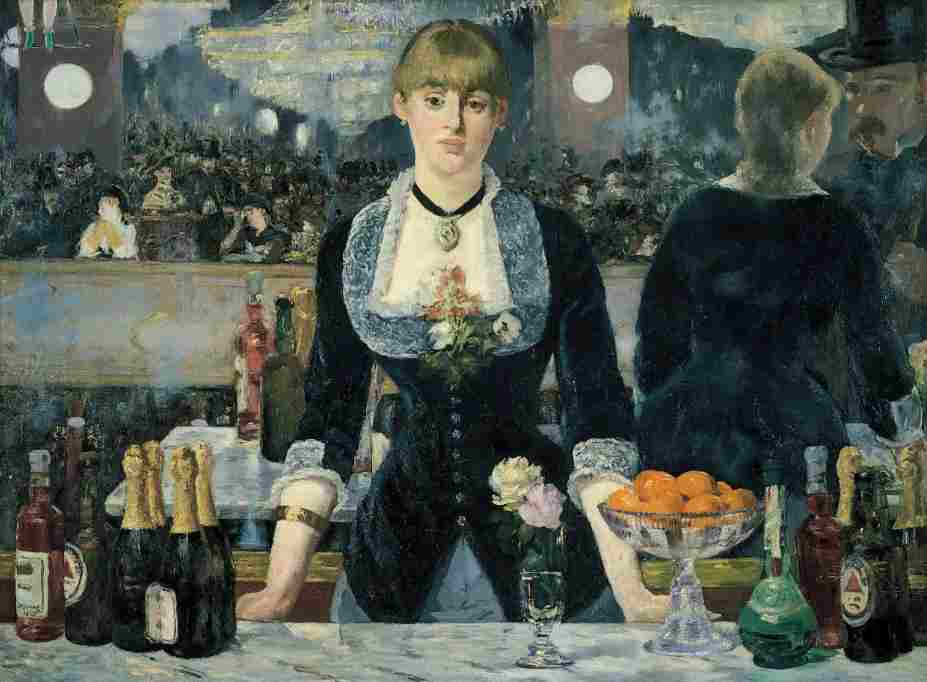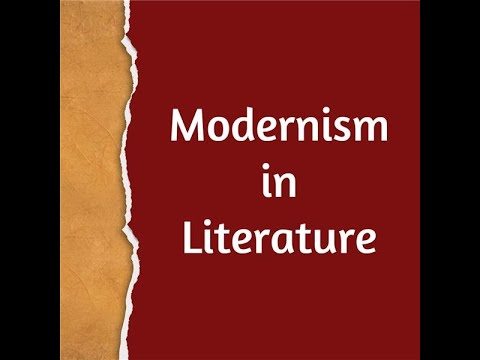Literary Modernism | Exploring its Depths and More!
Published 07-11-2023
29181

Literary Modernism | Exploring its Depths and More!
Have you been assigned an essay, assignment or research paper on modernist literature by your professor? Do not worry! Literary Owls’ night owls are ready and willing to help you with any type of modernism, also referred to as modernist literature, paper.
Let us explore this important topic that scholars, researchers and students are likely to encounter in their academic journey. The origins of literary modernism can be traced back to the late 19th and early 20th centuries in North America and Europe.
Before delving any further into this important literary revolution, it is important to define it first!
What is literary modernism?
It describes the transition from the traditional norms and into new approaches of expressing oneself. However, the “make it new” imperative created by Ezra Pound is perhaps the best reflection of the spirit of literary modernism.
The rapid industrialization that resulted from The Industrial Revolution and related technologies (that characterized the better part of the late 19th and early 20th centuries) not only transformed manufacturing techniques but also changed the attitudes of writers toward the conventional standards of the trade. Among the most significant literary movements that was born out of this cultural shift is literary modernism.
Literary modernism, in a way, was a simply an act of revolt against the conventional ways of doings, or the norms, in the writing domain. Writers rebelled by refusing to follow the rules anymore and instead looked for new approaches of communicating ideas and generally expressing themselves. In writers’ view, the conventional approaches to writing were not reflective of the social changes that were taking place as well as the new generations that came out of it.
Modernism literary movement: What is the history behind it?
As a movement, literary modernism was began and fueled by the industrial revolution and urbanization, respectively, first in Europe as can be seen in the works of Franz Kafka, Knut Hamsun and Virginia Woolf. Modernism in literature was also notably shaped by the carnage of the First World War. Basically, the First World War broke the previously uninformed perceptions about the society for many modernists.
In the United States, modernist literature movement first became apparent at the dawn of the 20th century. As in Europe, modernism in American literature was not only influenced by the industrial revolution but also the Great Depression and the 1920-1933 Nationwide Prohibition. It was further fueled by a sense of loss and disillusionment. According to Saša Vojnović, some of the most prominent American modernists include Arthur B. Davies (1862-1928), Robert Henry (1865-1929), John Sloan (1871-1951), Ernest Lawson (1873-1939) and Everett Shinn (1876-1953), among others.
Simply put …
The modernist literature movement is marked by a self-conscious deviation from the old ways of writing, not only in drama and prose fiction writing but also in poetry. Writers in the modernism period experimented with all mode of expression and types of literary forms they could think of.
It is worth noting that modernism is an umbrella term that comprises of small yet highly important artistic and literary movements, including imagism, surrealism and expressionism, all of which are explored below. Others include dada, symbolism, cubism and futurism.
As stated earlier, modernism origins can be traced back to the late 19th and early 20th centuries when artists, thinkers and writers started disregarding preconceived norms and developed new ways of conceiving own realities.
Take for instance the great thinkers such as Sigmund Freud (1856–1939) and Ernst Mach (1838–1916) whose theories heavily influenced early modernism writing. These two great thinkers were notably influential in the early stages of the modernism time period and the modernism era in general. Freud and Mach considered the subjective experiences of human beings in the world and ways that own desires and drives shaped an individual’s world view.
The works of Frederick Nietzsche ought to be also be taken into account while exploring the origins of modernism, particularly how he highlighted the significance of mental considerations and psychological drives over physical things or facts.
Literary Modernism: Parts
According to Poem Analysis, there are various small yet highly important artistic and literary movements within the modernist movement, and include imagism, surrealism, and expressionism.
Imagism
It is writers like Ezra Pound that that kick-started modernism literature in the early 20th century with his desire to deviate from the old ways of writing. Pound’s writings, as well as those of his peers in the imagist movement, were marked by free-verse, succinctness and precise images.
Consider the following poems of two important imagist movement pioneers found in the Academy of American Poets website;
- "A Lady" by Amy Lowell
- "The Return" by Ezra Pound
Surrealism
In modernist literature, surrealism describes the artistic endeavor to connect imagination to reality. Surrealists aim to bridge the unconscious and conscious minds by developing bizarre or unreal stories filled with juxtapositions. This philosophy took hold in France in the early 20th century and spread to other regions.
However, the best surrealism examples are epitomized in the works of poets in France. They emphasized dreams over logic and reason, giving more preference to the subconscious. French poets exemplified this approach by use of techniques such as “automatic” creative production to tap into deeper knowing or intuition.
Consider the following poems of two important surrealist French poets found in the Academy of American Poets website;
- "Zone" by Guillaume Apollinaire
- "Waifs and Strays" by Arthur Rimbaud
Expressionism
Initially in painting and poetry, expressionism is a modernist movement whose origins can be traced back to early 20th century Europe. Expressionists were after embodying the meaning as opposed to the reality and were mainly driven by experience and emotion to think, write and paint about perception of the world.
The German philosopher Friedrich Nietzsche, for instance, drew attention to the cultivation of resoluteness of an individual as well as going above and beyond the traditional conceptions of morality and reasoning. Of particular interest is his philosophic fiction “Thus Spoke Zarathustra: A Book for All and None” about the “New Man” that profoundly shaped expressionist school of thought.
Consider the following works of important expressionist movement writers (or directly influenced by expressionism) found in the Academy of American Poets website;
- "Whispers of Immortality" by T. S. Eliot
- "Rhapsody on a Windy Night" by T.S. Eliot
- "Archaic Torso of Apollo" by Rainer Maria Rilke
The characteristics of modernism
Literary Owls has defined literary modernism as well as the history behind it and the various small yet highly important artistic and literary movements associated with it for you. Now let us move onto the next part of determining why particular works are regarded modernist.
In a nutshell, Literary Owls seeks to make you understand the elements that distinguishes modernist works from other literary works. Understanding the main characteristics of modernism literature is perhaps the most important approach towards unravelling what sets modernism apart.
Whereas modernist literature have many characteristics, the most significant characteristics of literary works from the modernism time period in general and modernism era in particular include;
- Symbolism
- Experimentation
- Individualism
- Formalism
- Absurdity
Symbolism
It was common for writers from the modernism time period to incorporate events, places, people and objects with significant meanings. Modernists envisaged a multi-layered reality, most of them invisible or somewhat encrypted. The conception of a poem as a mystery or puzzle to be deciphered has its origins in the modernist era.
Whereas symbolism was far from being a new notion in literature, the modernists were especially creative in how they incorporated symbols into their works. Unlike their preceding contemporaries, modernists left more to the audiences’ imagination, resulting to open-ended stories with various inferences. James Joyce's “Ulysses,” despite its fearsome reputation as a difficult epic, is perhaps an excellent example of a century old open-ended modernist narrative whose symbols are open to various interpretations in each chapter.
Experimentation
As stated earlier, writers in the modernism time period strayed from old writing ways and forms, with writers mixing past images with modern themes and languages to create a collage of styles, novelists defying all expectations, and poets abandoning the conventional rhyme schemes and writing in free-verse.
Instead, modernists began shifting into tapping on the inner workings of consciousness, a preoccupation that resulted in a type of narration referred to as stream of consciousness. The concept of stream of consciousness describes a narrative style that attempts to express the thought process of a character rather realistically. This way, the literary work’s point of view flows in a manner similar to human thought.
The aforementioned works by James Joyce, Virginia Woolf, Ezra Pound and T.S. Eliot are renowned for their experimentation as modernist literary works.
Individualism
In literary modernism, the society is less interesting compared to the individual and, therefore, modernists were drawn into how the individual adjusted to the changing world. In some instances, modernist literature featured individuals triumphing over challenges whereas in most cases they portrayed a persona avoiding getting into difficulties.
Modernists painted the society as presenting obstacles to the characters’ integrity. Take for instance the works of Ernest Hemingway who, according to Honorine Roullier, is a writer that is mostly perceived as a modernist in France due to his style alone. Hemingway is especially remembered for his clear depiction of characters in his work that seemingly made peace with their situations and kept going.
Formalism
Modernist literature writers perceived literature mostly as a trade as opposed to a flowering of creativity. In their view, novels and poems were a product of smaller parts rather than internal and organic forms expressed by their earlier contemporaries.
This understanding of literature as a trade fueled the desire of modernist writers to be creative and original. For instance, it is common for modernist art and poetry to comprise of invented words, dense vocabulary and foreign languages. Edward Estlin Cummings, who was arguably one of the most creative poets of his time, tried out poetic language and forms to create a unique personal style. For instance, he disregarded traditional structures and techniques to develop a fresh, rather unusual means of poetic expression.
Absurdity
As stated earlier, the horrors of the First World War had profound impacts on the writers at the time. Many renowned English poets were wounded or died the in the First World War. Also, the society was being transformed by global capitalism at all levels. The world was changing to become more absurd daily, at least for many writers at the time period.
The rush of daily life was slowly but surely was demystifying the mysteriousness of life. The absurdity of Second World War violence was further proof that humans no longer had a clear idea of what they want to do achieve or do. This absurdity was portrayed by modernist writers in their works. This is evident in how modernist writers at times attributed human emotions, actions or traits to non-humans, objects or animals.
This, according to the Academy of American Poets, is referred to as anthropomorphism and can be seen in well-known literature classics such as J.R.R. Tolkein’s Lord of the Rings trilogy series (1954), George Orwell’s novel Animal Farm (1945), Franz Kafka’s The Metamorphosis (1915), and Gabrielle-Suzanne de Villeneuve’s novel Beauty and the Beast (1740). These works are excellent examples of modern absurdism in action.
Common themes in literary modernism
A broad range of themes are evident across modernist writers’ works, particularly in the context of literary modernism being a rebellion against the conventional writing approaches at the time, industrialism, and the First World War.
As such, listing all of the themes would be virtually impossible. Therefore, Literature Owls has compiled a list of four of the most prominent modernist theme, along with their examples. These four themes also provide an excellent starting point for writing essays, assignments and research papers about literary modernism.
They include;
- Destruction, Fragmentation, and Loss
- Mythological Tales
- Transformation
- Love and Sensuality
You can use them as they are or tweak them a bit to meet your preferences if you are tackling the essay, assignment or research paper on your own. If you decide to use Literary Owls’ personalized essay writing consultancy and advisory services, the better! Our night owls are capable of writing great essays, assignments and research papers about modernism.
Destruction, Fragmentation, and Loss
Modernist authors like William Faulkner and T.S. Eliot were interested in the transformation of cultures, and their fragmentation eventually. Simply put, they were concerned with how people, cities and civilization were torn down and fell.
Among the most significant (and recurring) themes of modernism in literature is arguably destruction. From the preceding, the modernism era was marked by the senseless destructions and unimaginable things that humans can do due to the First World War. This destruction was reflected by modernists in their works by deviating from the conventional ways of writing. They came up with new writing styles that saw the traditional structures and syntax changed.
In terms of fragmentation, it was used both stylistically and conceptually in their works by taking apart the various writing styles and putting them back in a unique way. In terms of loss, destruction often leads to unimaginable losses. The works of Ernest Hemingway and other writers or poets that perceive their characters from the perspectives of past experienced devastation, for instance, depict such losses as deaths as well as rearrangement of own beliefs.
People began scrutinizing things that took for granted, for instance in literature, art, architecture, music and even politics. Most religious, government and education institutions were disrupted, resulting in the feelings of displacement and further loss.
Mythological Tales
Unlike their earlier contemporaries, modernist poets, writers and artists never limited their references to myths such as Latin and Greek mythology and instead conceptualized those stories in fresh and present-day contexts.
One defining characteristic that defines literature modernism is the use of mythological figures and tales as characters or symbols key to the plot. An excellent example of this is found in James Joyce’s “Ulysses” where the mythical Homeric Odysseus is recreated by the writer into the contemporary Leopold Bloom and tells of his dull existence in an ironic interesting way.
Another examples of an instance where integrative mythology is integrated in modernist literature is in the novel “Mourning Becomes Electra” by Eugene O’Neill where the writer Lavinia Mannon is adapted into the Aeschylus’ Oresteia’s Greek mythical Electra.
Transformation
Transformation, as a theme, and literary modernism are practically inseparable. In itself, the notion of literary modernism is a movement founded on the concept of radical change, particularly in norm, form or expression.
Basically, the theme of transformation describes s symbolic rebirth marked by change in identities, opinions and beliefs, and fueled by the experiences of destruction, loss and war that eventually led to fragmentation.
Literary Owls has looked up some of excellent examples of the theme of transformation in modernist works and found it in some classics such as Ezra Pound's “Make It New” and Franz Kafka's “The Metamorphosis” as well as American contemporaries such as Ernest Hemingway’s “The Sun Also Rises” and William Faulkner’s “Barn Burning.”
Love and Sensuality
Love and sensualism, shaped by individualism, is among the notable features of modernist literature. However, the themes of love and sensuality was not spared by demystification and disillusionment since they were reimagined somehow realistically and, at times, cynically.
Modernists did not describes love as capable of moving mountains but instead described it with a rather fatalistic and grimmer tone. In a way, this is further proof that the social fabric as they knew it at the time period was being disrupted.
Other than the themes of love and sensuality, modernist literature was marked by reflections on and discussions of feminism, gender roles and sexuality. According to Monica Latham, D. H. Lawrence, Virginia Woolf and Katherine Mansfield are some of the prominent modernist writers in this regard.
If you are interested in the theme of love and sensuality in modernist works, start with Virginia Woolf’s “Mrs. Dalloway” and James Joyce’s “Ulysses.” These two works, according to Ulrike Hässler, are great examples of modernist works that highlight ways in which modernist writers approached love and sensuality from the perspectives of gender and sexuality.
Use Literary Owls academic writing advisory services
If you have been led to this page by an internet search for content relating to your modernism assignment, essay or research paper, or have simply come here aiming to understand modernism in literature better and be able to write an essay on the same later on, Literary Owls has got you covered!
Our experts, whom we fondly refer as to as night owls, are ready and willing to employ their expertise and broad experience to write a modernism paper for you or provide you with quality modernism essay or assignment advisory or counsel services.




